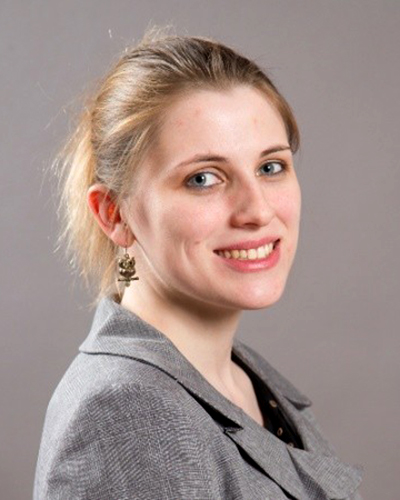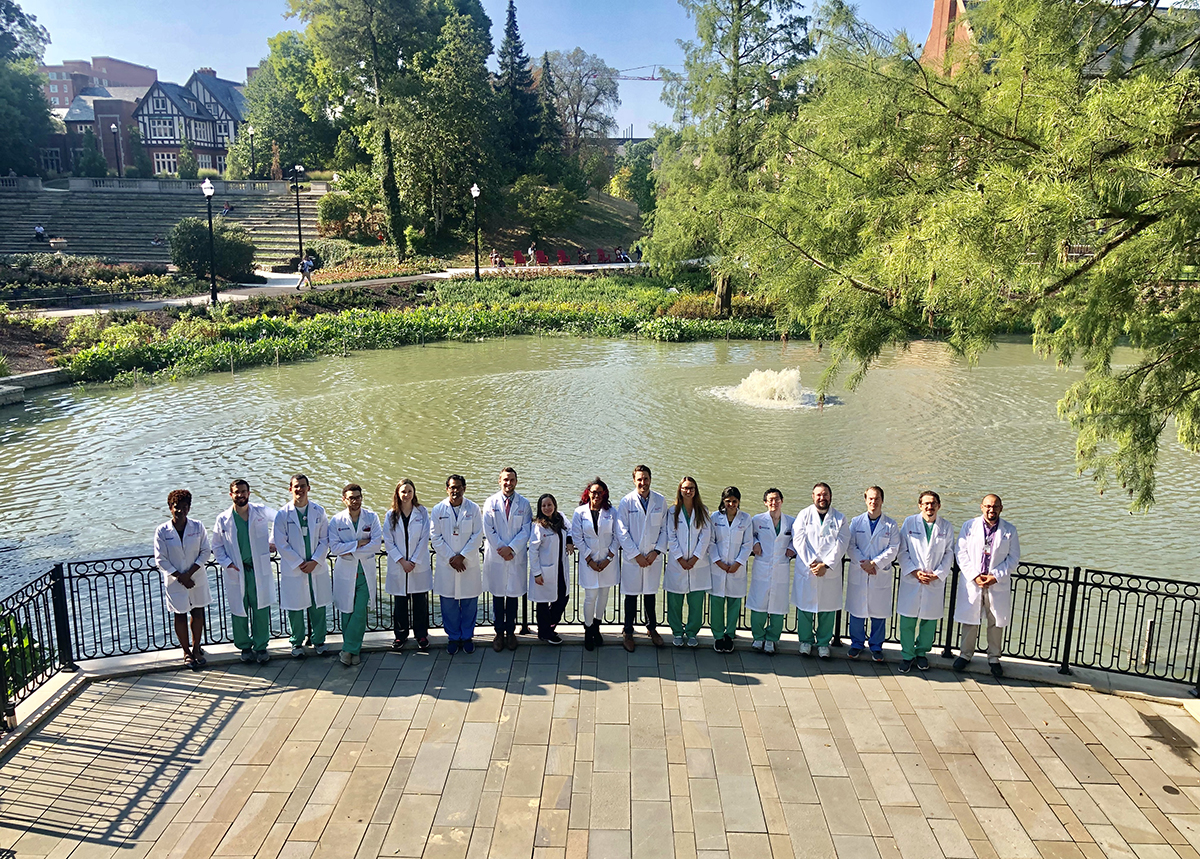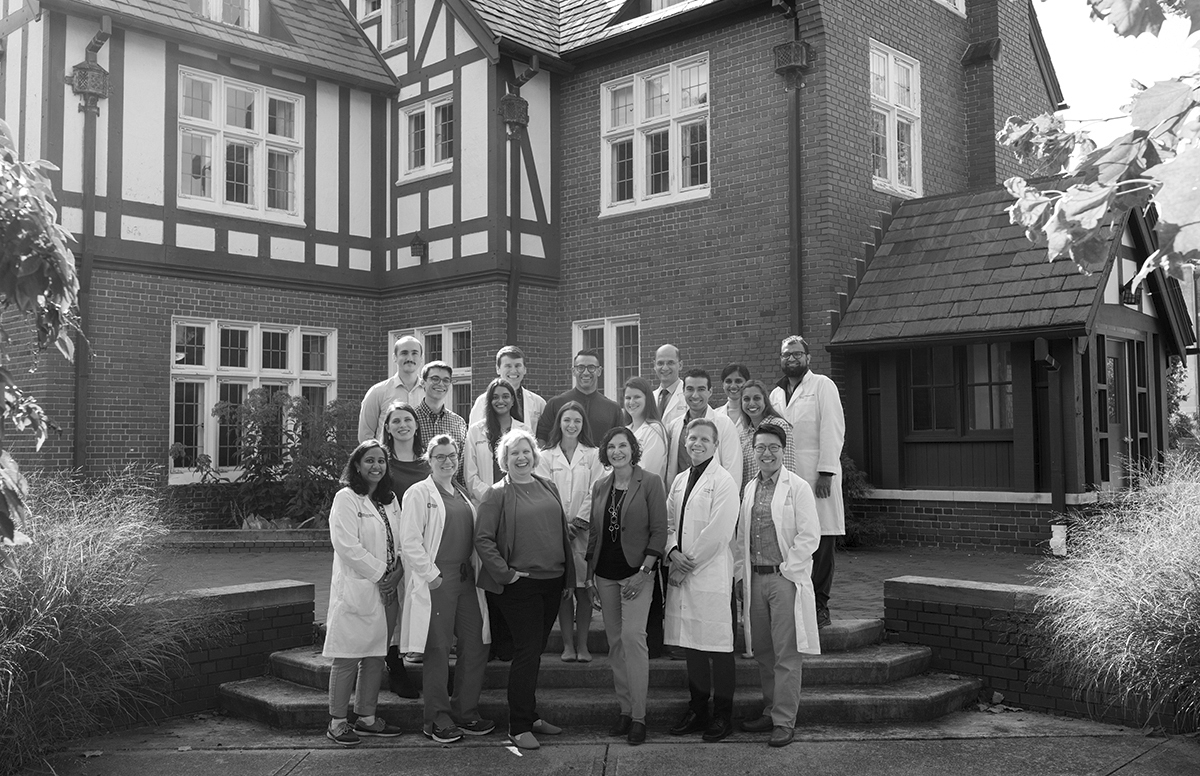
Medical Education Program Manager
N308 Doan Hall
410 W. 10th Ave
Columbus, OH 43210
RESIDENCY PROGRAM OVERVIEW
The combined anatomic pathology/clinical pathology (AP/CP) "core" curriculum consists of 108 weeks of AP, 76 weeks of CP, and 24 weeks of additional AP/CP electives.
The department handles a large volume of surgical specimens, with approximately 70,000 accessioned per year. Because of the specialized nature of the cancer center and high volume of specimens, the department utilizes subspecialty sign out; residents are exposed to a wide variety of common and rare specimens. Glass slide exposure is emphasized during the surgical pathology rotations, which is supplemented by selected grossing of complex specimens. The residents rotate on a five day cycle within their 4-week AP subspecialty (two days of biopsies signout and "regs" previewing, two days of "regs" signout and grossing of one specimen, and one day of all-day grossing). Specimens are assigned based on level of experience and increasing degrees of difficulty, and there is an experienced group of pathology assistants and technicians available for answering questions and teaching. Computer workstations with guidelines and dictation templates are available for all standard specimens at each of the grossing stations. Medical related autopsies are performed on site at our Regional Autopsy Center in addition to a one month rotation at the Franklin County Medical Examiner’s Office during third year for exposure to forensic pathology. Residents also rotate through the busy cytopathology division where there is an opportunity to perform fine-needle aspiration procedures on patients. A teaching collection of glass slides with examples of classic and rare entities are available for the residents. There are also numerous digital slides and study sets available from the personal collections of various faculty members, as well as a growing in-house collection of cases scanned at our new Digital Pathology Scan Center.
The Pathology Department is spread throughout multiple buildings on campus and locations around Columbus. Please use these resources to get a feel for the size and scope of OSU pathology and to get information about parking and transportation:
- Wexner Medical Center map
- The Ohio State University map
- Wexner Medical Center Heath Care locations
- Ohio State University Campus Park (find parking)
- Campus Area Bus Service (CABS)
During the clinical pathology rotations, residents are exposed to various laboratory testing methods, laboratory management techniques, and many other aspects of clinical pathology. Dedicated clinical pathology rotations include chemistry/toxicology, microbiology, cytogenetics, molecular pathology, transfusion medicine/apheresis, flow cytometry, coagulation and hematopathology. During these rotations, time is split between experience in the laboratory, one-on-one didactic sessions, clinical conferences, departmental meetings and self-directed reading and learning modules. The hematopathology rotation offers the opportunity for residents to get comfortable with a variety of fluid specimens, along with working up complex tissue and bone marrow cases and reviewing consultation cases from outside institutions. During the transfusion medicine rotation, residents serve as a focal point for triaging clinical questions and issues that arise in the blood bank, and are also given the opportunity to participate in the management of patients on the apheresis unit. Additionally, blood donor experience is provided at the American Red Cross Central Ohio Blood Service, located in Columbus.
Conferences are held from 8:00-9:00 AM daily, with an average of two anatomic pathology conferences and two clinical pathology conferences per week, with an unknowns or informatics conference held on Fridays. The conferences include didactic sessions, unknown slide conferences and journal clubs. Also, there is a dedicated biannual informatics lecture series. Interdisciplinary conferences are held in various disciplines throughout the week in the areas of dermatopathology, gynecologic pathology, bone and soft tissue pathology, head & neck pathology, gastrointestinal and hepatobiliary pathology, breast pathology, medical kidney and transplant pathology, hematopathology, and neuropathology. Additionally a general interesting case conference is held biweekly for faculty and residents to share interesting cases with the department from their sub-specialties.
2020
2021
For all first year residents (PGY-1), a 4 week introductory block provides a review of basic histology using glass and virtual slides, as well as instruction on the basics of grossing specimens from different organ systems, performing frozen sections and autopsies, and familiarizing themselves with different information systems that will be used throughout their residency. The remainder of the year, the PGY-1 residents rotate in surgical pathology and autopsy, as shown in the sample rotation schedule below:
| Block | PGY1 | PGY2 | PGY3 | PGY4 |
|---|---|---|---|---|
| 1 | Bootcamp | Renal | Cyto | Peds CP |
| 2 | Cyto | Micro | BR/GU | Heme |
| 3 | Gyn | Transfusion Medicine | Forensic & Elective | Transfusion Medicine |
| 4 | GI | Frozens | H&N, BST, & TH | Toxicology & Chemistry |
| 5 | Autopsy | Heme | Gyn | Benign Heme |
| 6 | Autopsy | Cytogen | Elective | TM |
| 7 | Autopsy | Heme | Gross Room & Pics | Heme |
| 8 | Chemistry | Elective | Cyto | Elective |
| 9 | BR/GU | Heme | GI | Elective |
| 10 | GI | TM | Peds AP | Elective |
| 11 | BR/GU | Molecular | Derm | Elective |
| 12 | H&N | Lymph | GYN | Elective |
| 13 | BST & TH | Heme & Flow | Neuro | Elective |
- BR/GU = Breast & Genitourinary Pathology
- BST = Bone & Soft Tissue Pathology
- GI = Gastrointestinal Pathology (includes Pancreas and Liver)
- Cyto = Cytopathology
- Cytogen = Cytogenetics
- Derm = Dermatopathology
- Gyn = Gynecologic Pathology
- Flow = Flow Cytometry
- Frozens = Frozen Sections
- H&N = Head & Neck Pathology
- Heme = Hematopathology
- Lymph = Lymph Node & Lymphoid Tissue Pathology (subset of Hematopathology)
- Micro = Microbiology
- Neuro = Neuropathology
- Peds AP = Pediatric Anatomic Pathology
- Peds CP = Pediatric Clinical Pathology
- TH = Thoracic Pathology
- TM = Transfusion Medicine (Blood Bank and Apheresis)
As shown above, PGY-2 residents rotate in clinical pathology, where they are introduced to call responsibilities, signout, and management duties on each clinical service. PGY-3 residents return to anatomic pathology, and PGY-4 residents rotate in clinical pathology and study for their board examinations. Throughout years 2 through 4, residents have elective opportunities which can be used to revisit any rotation or complete special projects and research. Please visit Pediatric Anatomic Pathology | Nationwide Children's Hospital for more information about our pediatric pathology rotations and use Home | Health Sciences Library for an idea of academic resources available to our residents.

Our residents also have a regular two year cycle of didactic lectures, which are mainly held on weekday mornings from 8am – 9am, covering all the major topics in Anatomic and Clinical Pathology. These lectures also include unknown case conferences, journal clubs, interesting case conferences, and lectures on Business and Laboratory Management.
PGY-1 residents are responsible for autopsy call on Saturdays and holidays. On these days, the resident on call must be available for any autopsy cases which are ready to move forward by 1:00 pm. They are paired with an attending pathologist, who provides direct supervision and facilitates reviewing the clinical history, formulating an approach to the case, and interpreting any gross findings.
PGY-2, PGY-3, and PGY-4 residents take anatomic pathology and clinical pathology weekday and weekend call. On weekdays, a resident’s call begins at 5:00 pm and ends at 7:00 am the following morning. On-call responsibilities include preparing frozen sections, evaluating organ transplant biopsies, working up acute leukemias, triaging medical renal biopsies, and addressing queries from the blood bank. Several attending pathologists are always assigned to support the resident as needed. Each resident is typically on call 2-3 weekdays per month and one weekend every two months. At the conclusion of training, residents will have gained a tremendous amount of on-call experience, and they are well prepared to excel in a variety of practice settings.
Evaluations of residents performance are carried out at the end of each rotation and are based on the competency standards set by the ACGME. Evaluations are performed by the faculty and staff, and are reviewed with the resident by the Program Director or Associate Program Director for AP and CP semi-annually. In addition to the faculty evaluation, residents' performance and progress is also objectively evaluated at the end of major rotations. A well-defined set of criteria for remediation, disciplinary action or probation is delineated in the Residency Program Statement and Resident handbook which is provided to all residents at the beginning of their training. The residents evaluate the faculty, rotations and conferences anonymously.
Note: Click on heading text to expand or collapse.

